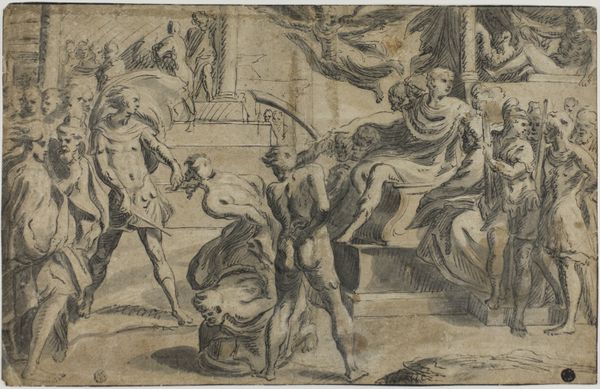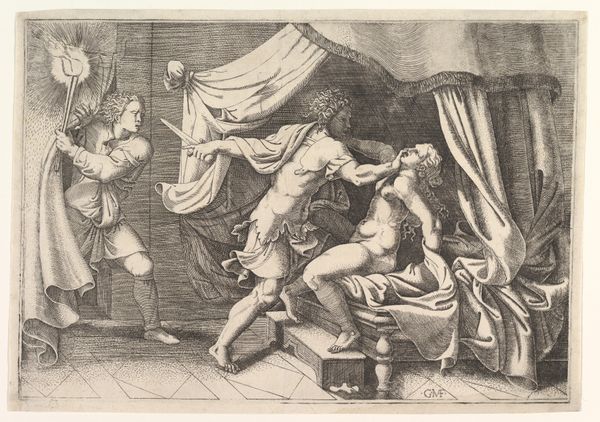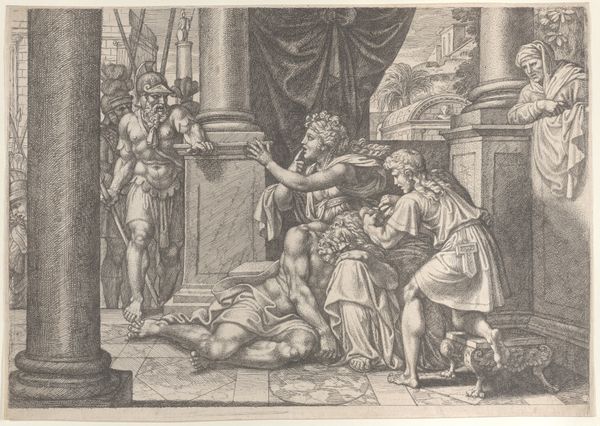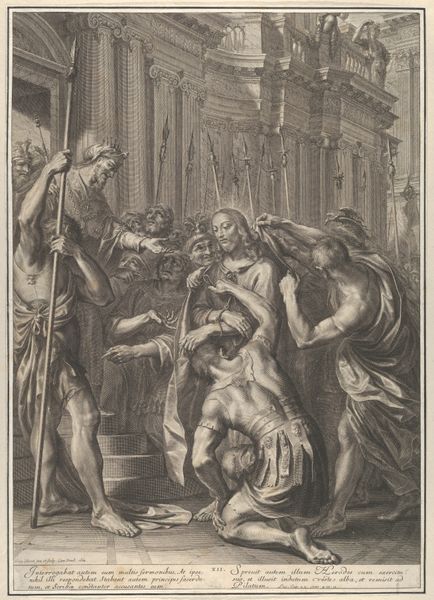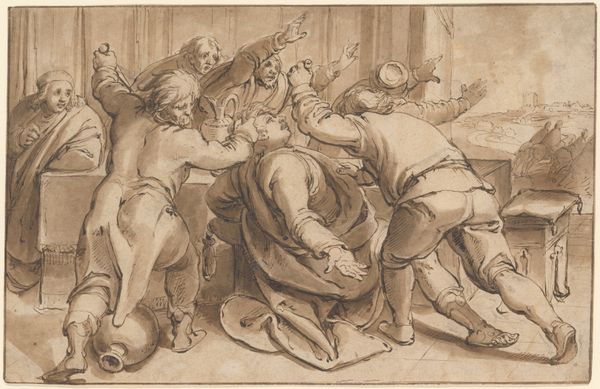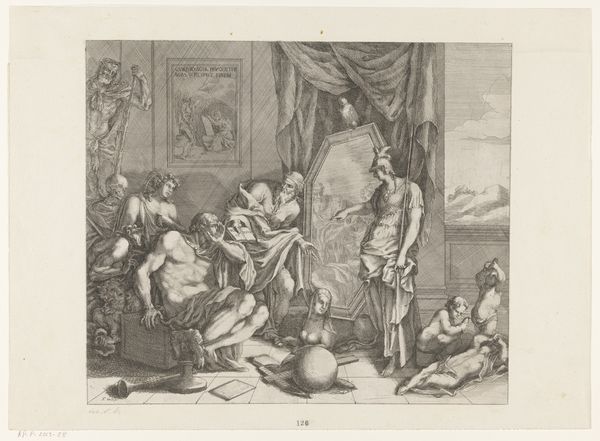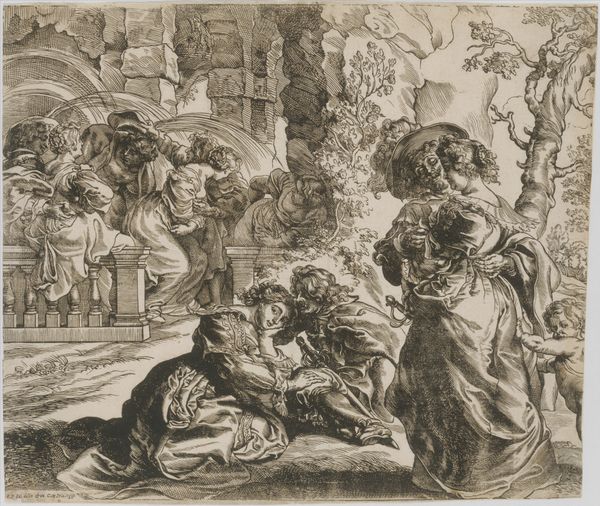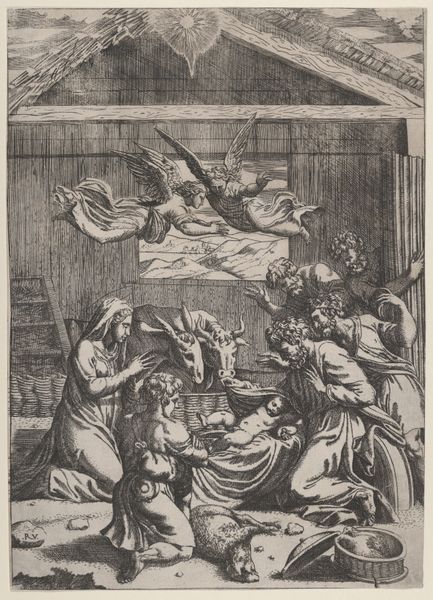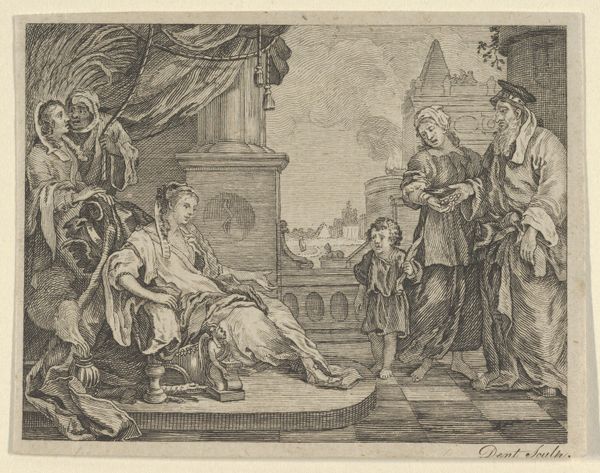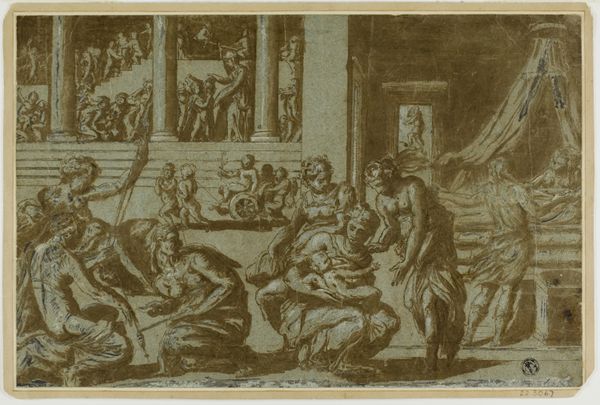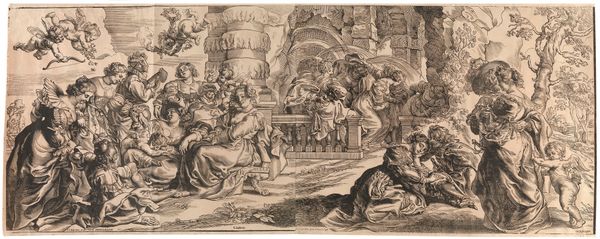
Rome emperor on a throne, vestal virgin Tuccia holding a sieve approaching from the left 1531 - 1576
0:00
0:00
drawing, print, engraving
#
drawing
# print
#
figuration
#
soldier
#
ancient-mediterranean
#
pen-ink sketch
#
men
#
history-painting
#
academic-art
#
italian-renaissance
#
engraving
Dimensions: sheet: 10 11/16 x 13 3/4 in. (27.1 x 35 cm)
Copyright: Public Domain
Curator: This engraving, currently held at the Met, depicts a scene titled "Rome emperor on a throne, vestal virgin Tuccia holding a sieve approaching from the left". Giulio Bonasone created it sometime between 1531 and 1576. What's your immediate reaction to the piece? Editor: My eyes are immediately drawn to the vestal virgin—her figure is so dynamic against the static backdrop. The way the fabric drapes and swirls around her creates such a sense of movement, juxtaposed with the rigidity of the architectural elements. Curator: Absolutely, and consider that the narrative itself lends potency. The tale of Tuccia, accused of unchastity, proving her innocence by carrying water in a sieve... It speaks volumes about the precarious position of women and the importance of visual displays of virtue in Renaissance society. Editor: Visually, the artist uses line work masterfully. Notice the hatching and cross-hatching. It almost feels like he is sculpting with ink, building up depth and volume. The contrasts are striking and heighten the drama of the scene, pulling you into the moment of Tuccia's test. Curator: Precisely. The figure of the emperor and his guards adds layers to this reading. What do you make of his central placement and gesture? It projects authority but also raises questions about the role of power and justice. It is staged in a setting deliberately designed to present moralistic concepts as well as cultural memory. Editor: I would also like to point out the rendering of the clothing on the figures which uses only very basic linework, yet effectively conveys folds, contours, and the tactile qualities of fabric through subtle shifts in line weight and direction. Note how Bonasone avoids uniform shading, which maintains an open, airy feel. Curator: Indeed. The work makes for a powerful comment about reputation, gender roles, and power structures within Renaissance culture. Bonasone also offers a look into the popular appetite for stories illustrating the triumphs of Roman values, virtue, and leadership. Editor: It's also the strength of Bonasone's technique in the engraving itself—a beautiful balance of light and shadow, activity and stillness—that really drives the themes home, presenting virtue as attainable. Curator: Seeing such dynamic use of traditional media brings a fresh perspective, prompting reconsideration of its message within its historical framework. Editor: Agreed. It really highlights how closely the formal elements work together to bring the history alive, engaging viewers even centuries later.
Comments
No comments
Be the first to comment and join the conversation on the ultimate creative platform.
